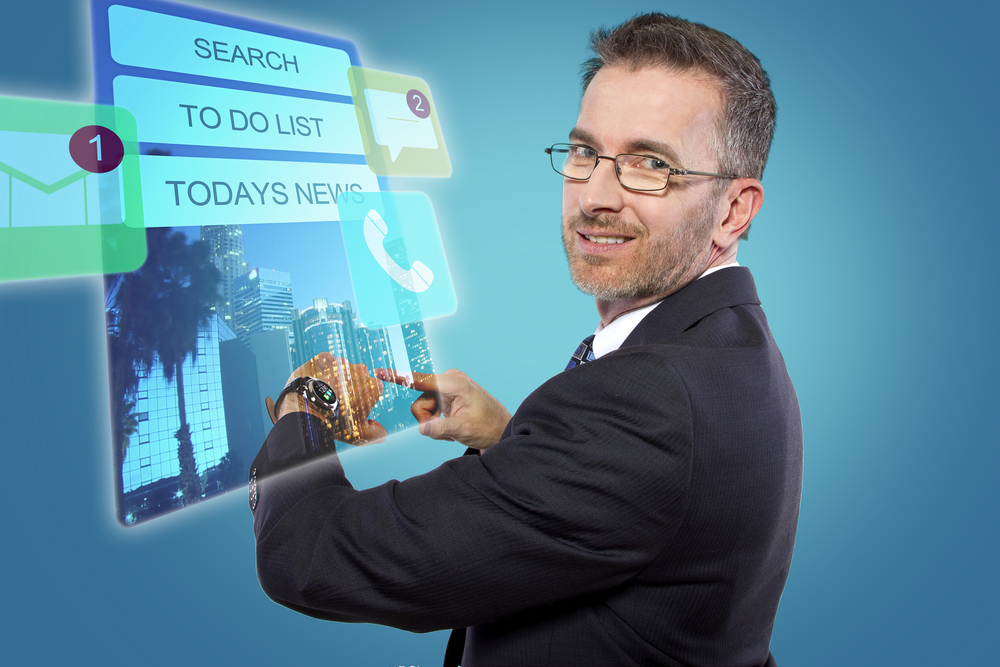
Although they are currently getting the most consumer attention, smart watches are but one of many devices in wearable tech. The integration of sensors and accessories, ranging from wristbands to garments, will provide self-tracking enthusiasts consistent monitoring with little to no conscious effort on their part. Monitoring personal health and wellness will be as effortless as buttoning your shirt or tying your shoes.
The technology is growing and maturing while the sensors are getting smaller, which is creating freedom to build smart consumer electronics straight out of sci-fi fantasies. There is already a promising future for wearables in business, and as monitoring becomes increasingly seamless, it opens the door for innovative integration in a variety of industries.
Construction and Manufacturing
In the construction and manufacturing industries there are constant safety concerns. Workers operating heavy machinery often find themselves in dangerous situations -- a careless or drowsy moment could result in serious injury.
Wearables will be able to monitor worker health and alertness to ensure necessary vigilance before they get behind equipment controls. Employees’ vitals can be monitored to ensure that they are attentive and ready to work. An alert triggered by a slowed heart rate or shaky pulse can signify to a manager that a worker is sluggish or ill before a costly mistake is made. Monitoring construction and manufacturing workers while they’re on the job will assist in safely managing shift rotations, decreasing the number of preventable hazards in these industries.
Commercial Driving
Long hours, poorly lit roads and solo shifts can make staying alert difficult for many commercial drivers. Wouldn’t you like to know that your driver is able to safely operate a vehicle before you jump into a taxi? This is an even greater concern for commercial truck drivers who can spend hours on the road without necessary shift changes.
As with construction machine operators, a driver’s heart rate monitoring device will emit an alert when their vitals drop too low. However, the driver can be the one to receive the alert or wakeup call through haptic technology. A sleepy driver can receive a series of taps or pricks if they start to doze off while behind the wheel -- an evolution of the low fidelity rumble strips on the side of the roads today. While wearing smart glasses, if a driver takes their eyes off the road for an extended period of time, either distracted by something in the vehicle or due to drowsiness, they can receive a haptic alert prompting them to refocus and keep their eyes safely on the road, or have the vehicle trigger a safe driving mode.
Insurance
Progressive, an insurance firm, released Snapshot -- a device that plugs into a car’s ORB-II port, monitors the driver’s habits behind the wheel, and sends the collected information to Progressive -- in an effort to set appropriate driver’s insurance rates for each driver. However, if a driver forgets to remove their Snapshot before someone else drives their vehicle, that person’s driving will be reflected on their policy. A wearable that syncs to a vehicle as well as an individual driver and reports the results to a car insurance provider would be much more accurate. The personalization of wearable monitoring ensures that the soccer mom, busy dad and teenage boy who rotate between the family cars each receive appropriate driver’s insurance rates.
The same concept will be effective for health insurance. A 60 year-old customer in excellent health won’t have to pay more for health insurance simply because of their age. Instead, each customer’s health can be monitored through a wearable device and the results sent to their insurance provider. Their health insurance policy will then be determined by the data gathered about their health through the wearable device, resulting in a more accurate rate for each individual.
Healthcare
Wearable monitoring will add a level of ease to the healthcare industry in both in- and outpatient situations. For example, a diabetic woman has to check her insulin levels throughout the day, but what if her blood sugar could be constantly monitored without any action on her part? With a wearable device tracking her insulin levels, she will be able to go about her day unencumbered by finger pricks and check-ins, and simply receive an alert if her numbers drop too low. Another example is for the child with a severe allergy. Both the child and the parents will be able to receive a notification through their wearable devices when the child begins to have an allergic reaction before it’s too late to act.
Haptic technology will have a significant impact on the healthcare industry. Nurses equipped with wearable devices will be able to receive a unique vibration sequence that will notify them when a patient is in need. Also, haptics will benefit doctors in the operating room through syncing the surgeon’s device to the patient’s vitals. Rather than looking at a screen to monitor vital signs, the surgeon will feel the patient’s heartbeat pulsing on their own skin, saving crucial seconds and reducing any opportunity for distraction.
Quantifiable Everything
Monitoring is useful for both collecting as well as consuming data. Wearable tech will not only enable more self-monitoring, gathering data for the quantifiable self, but we will also see monitoring enabling quantifiable teams, quantifiable workforces, and actions driven by interpretation of that data. Get your watch on!
Photo Credit: Rommel Canlas/Shutterstock
 Stephanie helps to drive vision and bring operational excellence as Chief Operations Officer for PointSource. She manages the design, delivery, and marketing organizations, creating intuitive experiences built on cutting edge technology, while crafting Agile and efficient collaboration patterns. Stephanie is rapidly identifying ways mobility revolutionizes how people live and work across a variety of industries and builds successful mobile strategies in collaboration with clients.
Stephanie helps to drive vision and bring operational excellence as Chief Operations Officer for PointSource. She manages the design, delivery, and marketing organizations, creating intuitive experiences built on cutting edge technology, while crafting Agile and efficient collaboration patterns. Stephanie is rapidly identifying ways mobility revolutionizes how people live and work across a variety of industries and builds successful mobile strategies in collaboration with clients.

